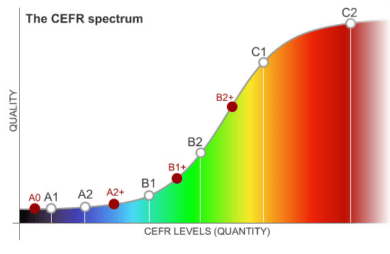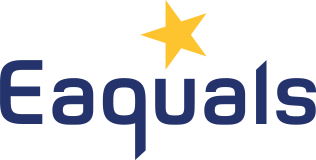The Common European Framework of Reference for Languages (CEFR)
The Common European Framework of Reference for Languages: learning, teaching, assessment (henceforth CEFR) was published by the Language Policy Division of the Council of Europe in 2001 after a period of research and piloting that lasted from 1993 to 1999. The CEFR is associated with the European Language Portfolio (ELP), over 100 official versions of which use checklists of CEFR-based descriptors for different levels to set individual learning priorities and track progress.
The CEFR has two broad aims: on the one hand to act as a stimulus for reflection, reform and innovation, and on the other hand to provide Common Reference Levels to assist communication across institutional, regional and linguistic boundaries.
Before the advent of the CEFR, dialogue and discussion about levels of language competence was difficult because each school, institution or testing body described course or test levels and achievement in their own terms. The CEFR helps overcome this problem by providing a common framework for the description of levels, course planning, assessment and certification.

This graphical representation of the CEFR is an overview of the complex structure of the CEFR at a glance. The curve is not a difficulty gradient – it simply reflects the relationship between the quantity of language and the quality of language described. So, A1 or A2 levels mainly consist of quantity descriptors, while B2 or B2+, for example, consist of roughly equal amounts of quantity and quality.
This spectrum, based on that of natural light, illustrates that there are no distinct boundaries between levels but that they flow into one another. The two axes of the graph illustrate the two fundamental, distinct sets of descriptors: qualitative and quantitative. It also shows how the levels are related and how new ones might be inserted. It has no zero point and no end point. It further allows organisations to add their own scales in parallel: for example, below the horizontal axis, the quantitative one, to illustrate how many hours teaching it takes on average to reach a given level.
Produced by Peter Brown, British School FVG – Trieste, for the Council of Europe and published as DGII/EDU/GRAZ(2017)13
Eaquals contribution to the development of the CEFR
Eaquals is widely recognised as an authority on the CEFR and its implementation. Eaquals personnel have played a leading role in developing the CEFR and introducing its use in language education.
Since Eaquals was founded in 1991 to the present day, we have played a leading role in the introduction of the CEFR and the European Language Portfolio (ELP) in language education and key Eaquals personnel have been crucially involved in the CEFR project.
This experience, along with our ongoing work in the accreditation of institutions offering CEFR-oriented language courses, has enabled Eaquals to develop unique expertise in the practical application of the CEFR for course design, teaching and assessment in language learning programmes. Some examples of our contribution are listed here.
To assist Eaquals members and the wider language education community in this area, we have developed a range of practical resources


